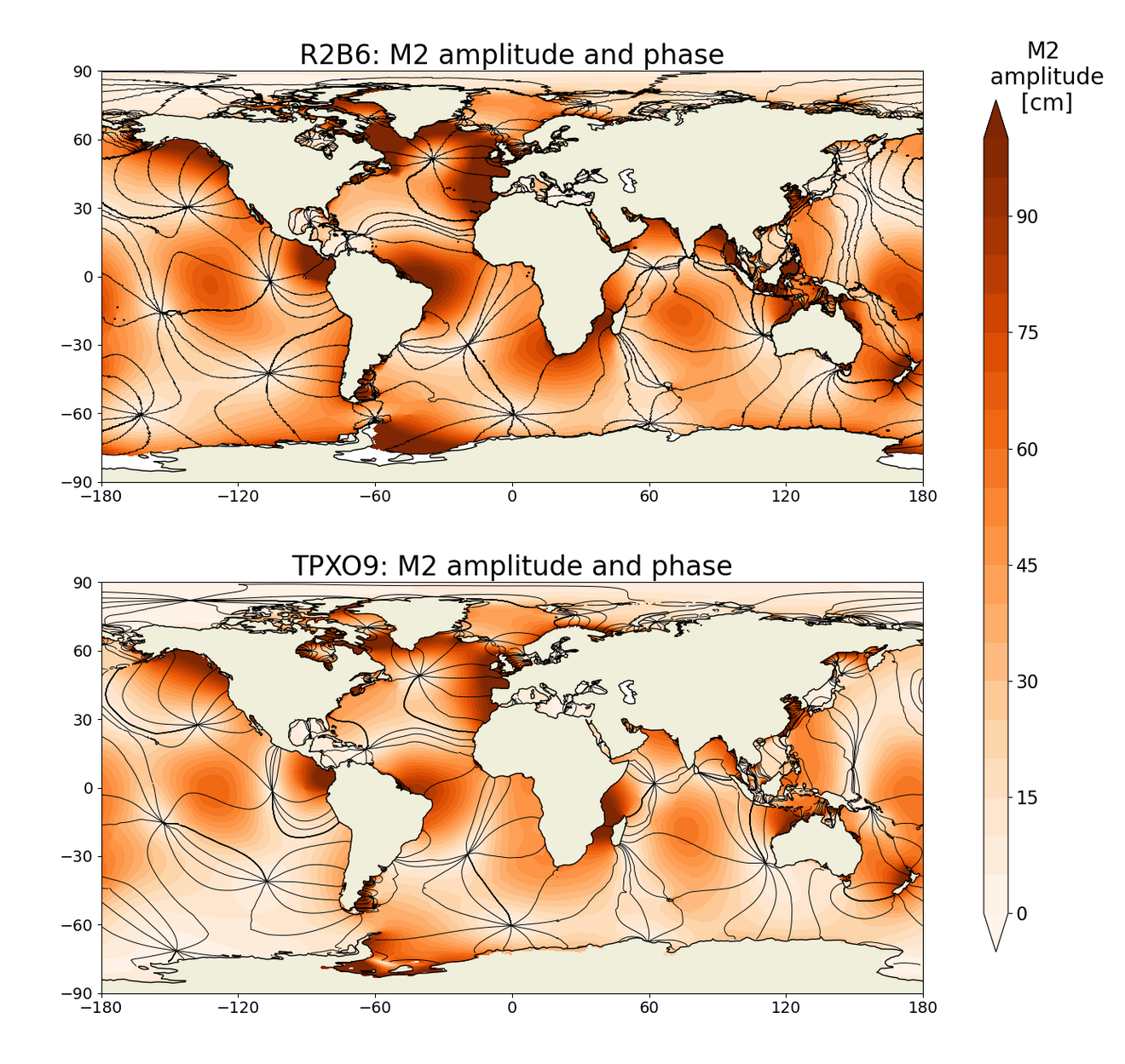Towards resolving internal tides in the ocean
Internal tides are the most energetic internal waves in the ocean interior. In the open ocean, they are generated when tides flow over ridges and sea mounts at the sea floor. Internal tides play a crucial role in shaping the ocean's internal wave field through wave-wave and other non-linear interactions. These processes allow wave energy to be transferred to turbulent motions, enabling the dissipation of energy necessary to balance the continuous power input at the sea surface. Thus, internal tides are crucial for establishing energy pathways in the ocean. On the way toward resolving internal tides, we need to make sure that the open ocean tides are realistically simulated.

Based on a suite of tidal experiments and using the observation-constrained tides from TPXO9 (Egbert et al. 1994, Egbert and Erofeeva, 2002), the colleagues in the Climate Variability department at the Max Planck Institute for Meteorology found that the ocean component of ICON is capable of producing the main features of the open-ocean tides as described by the geographical distributions of amplitude, phase, and amphidromic points. They show that using a spatially inhomogeneous grid does not deteriorate the quality of the simulated tides, an issue relevant for using the ocean component of ICON in its telescoping configuration. This telescoping configuration facilitates a global kilometer-scale grid with a locally refined ocean grid. The authors show further that implementing a parameterization of topographic wave drag improves the quality of the simulated tides in deep oceans independent of model configurations used, and the implementation of the parameterization of the self-attraction and loading effect in high-resolution (10 km) of the ocean component of ICON improves the quality of tides in the deep ocean. Finally, they show that the quality of tides simulated is sensitive to the time step or the parameters in the time stepping scheme used for obtaining the model solution.
Original publication
von Storch, J.-S., Hertwig, E., Lüschow, V., Brüggemann, N., Haak, H., Korn, P., Sing, V. (2023). Open-ocean tides simulated by ICON-O. Geoscientific Model Development, 16, 5179-5196. doi:10.5194/gmd-16-5179-2023.
Contact
Prof. Dr. Jin-Song von Storch
Max Planck Institute for Meteorology
jin-song.von.storch@mpimet.mpg.de

